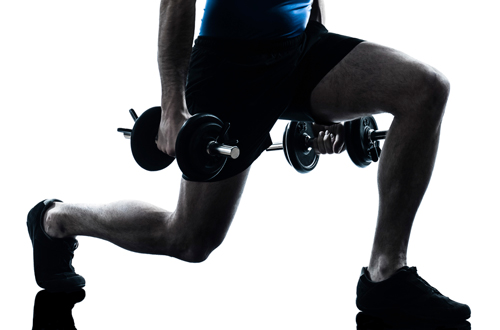
When performed correctly, the lunge exercise can strengthen a wide range of muscles. The lunge challenges stability, which is what makes it so effective. A body attempting to remain balanced engages many muscle groups, from the hamstrings to the calves to the core. That makes the lunge a highly effective exercise for people needing to rehabilitate or strengthen their lower extremities. But what about patients with knee problems?
Even people with healthy knee joints may experience pain when performing lunges. This problem is typically caused by improper form. When the knee comes too far forward during the lung, undue stress can be placed on the joint. You might also find yourself twisting your back knee outward or inward in an attempt to maintain your balance. This can lead to significant pain and even injury. Learning proper form can help you avoid these problems. We can ensure that your body is in proper alignment while engaging in this exercise However, for some people, lunges are inappropriate. Patients with meniscus tears or damaged articular cartilage, for example, are often better off avoiding the deep squat motion required for a lunge. And for anyone who still experiences knee pain despite perfect lunging form, other exercises might be a better bet. For instance, to strengthen the calf muscles, you can perform calf raises. While standing, lift and lower your body on your toes 10 to 15 times; holding a dumbbell in each hand will increase the resistance. For the seated calf raise, place a dumbbell, medicine ball or weighted plate on top of your bended knee, hold the weight with one hand and lift your heel off the ground 10 to 15 times for each leg. While some discomfort is normal when building or rebuilding muscle strength, you should not suffer unnecessary joint pain or risk causing further damage to your body. We can determine specific exercises that will strengthen the same muscle groups targeted by lunges, employing exercises more appropriate and comfortable for your individual body mechanics. This will ensure successful physical rehabilitation, and the restoration of strength to your lower extremity will enable you to resume your normal activities without pain.









